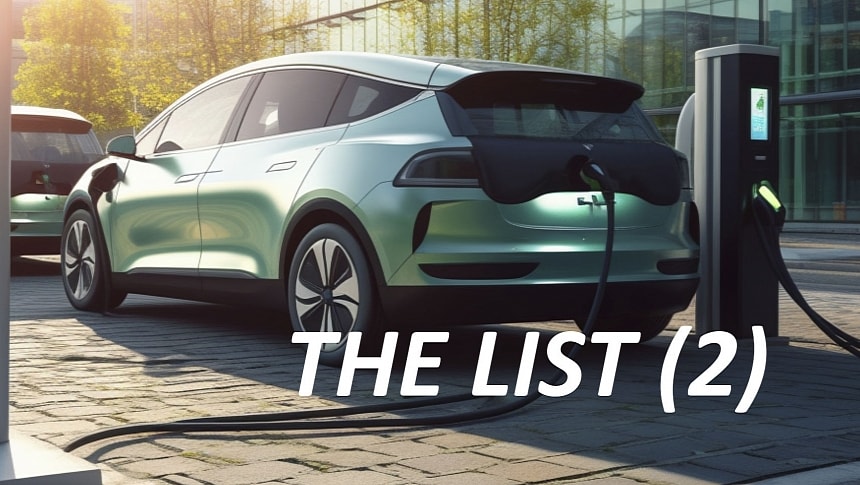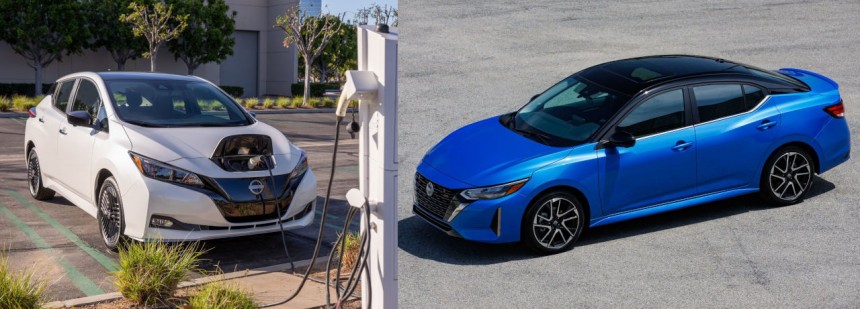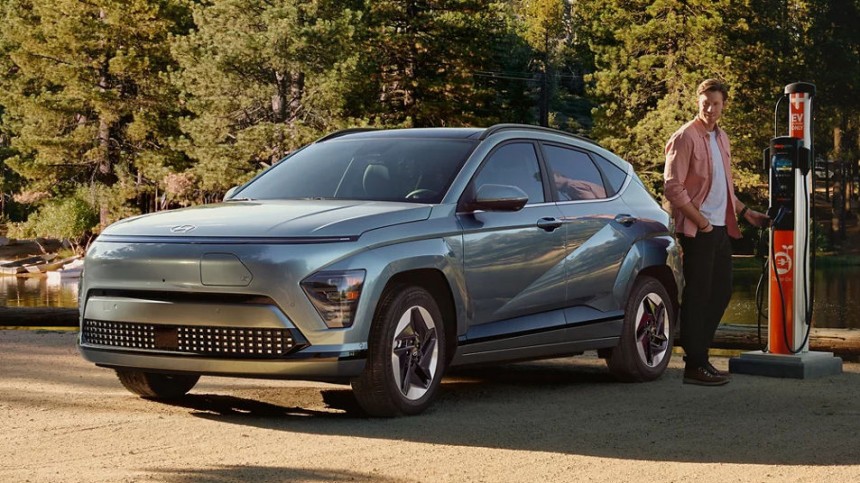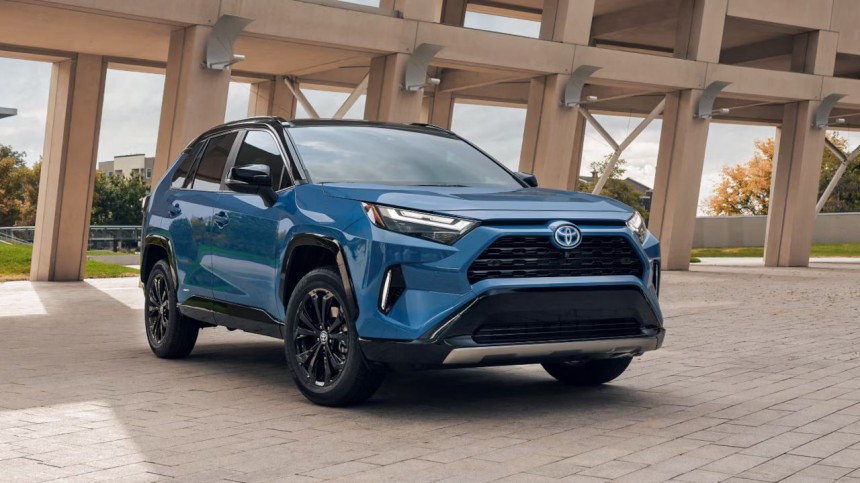Please don't expect a straight answer to all of your EV buying-related questions. As you know, trims, performances, and other details greatly influence the pricing equation. However, using the starting MSRP prices without incentives or taxes can give you a fresh perspective on the "EVs are too expensive" assertion.
It's time for me to sort this list in a useful way to avoid comparing apples to pumpkins. But first, let me give you a Top 10 on the most affordable EVs based on their MSRP price related to powertrains and batteries:
As you can see, these ten variants (in fact, there are only 8 nameplates) are in the $30-40,000 range, more or less. The most affordable Nissan Leaf has the oldest technology, which is why its basic price is even less than thirty grand.
However, if you don't want to spend more than $35,000, you must compromise on a battery with less than 50 kWh and an EPA range of less than 200 miles (which, I remind you, is a more optimistic estimation than what you'll get in real life). Also, don't expect too much space, especially for the average American standard.
However, I should note that electric cars' basic trims usually have more equipment than their ICE counterparts on average, so the price hike due to other comfort or luxury options won't be high. In fact, depending on eligibility for the EV bonus, you could end up with a nicely equipped EV for even less than $30,000.
It is too bad that the short-range would transform such a car into a strictly short-distance commuter. But, frankly, a Mini or a Fiat 500e is inappropriate for traveling hundreds of miles across the continent. The Leaf or the Kona are more fit for the job, but range anxiety and carefully planning the route can be serious headaches.
So, if you intend to almost exclusively use such a short-range car for city trips and in a restricted area around where you live and work, it's fine. Or is it? Instead of an electric 40 kWh Leaf, you could go for the somehow comparable Sentra sedan, around $7,000 cheaper in its basic variant.
Its gasoline engine saves you from range anxiety but will be more costly in the long run. Besides, if you're eligible for the $7,500 bonus, the ICE competitor is toasted from a budgetary perspective. However, for Kona Electric, it's not the same case.
The least expensive gasoline Kona is around $8,000 cheaper for the same trim—a little more than the governmental incentive Kona Electric is eligible for. Kona's 2.0-liter engine has an EPA-estimated fuel economy of around 30 mpg, so theoretically, the electric variant should break even in less than a year.
Now that we have settled things with the ICE rivals, putting aside EV's range anxiety and charging issues and considering the $7,500 bonus, the first "duel" on my list is between the Leaf and the Kona. The $4,000 advantage of the entry-level Leaf over the entry-level Kona seems to favor the Japanese model.
Otherwise, the Korean model easily wins the contest if we compare the bigger batteries, with similar prices of around $36,000. Thanks to Kona's much better range (261 miles vs. 212 miles), Leaf's roomier interior no longer counts. However, higher prices lead to interesting issues: How much are you willing to pay extra for more advantages?
For instance, the most affordable Tesla is just two grand more expensive than the 64.8-kWh battery capacity Kona. The Model 3 has a slightly better range (and a Supercharger network it can rely on), better performance and handling, a higher DC fast-charging rate, and pretty similar interior space, but more evolved equipment and style.
Besides, if you lease these cars, the difference in the monthly fee will be almost negligible. So, what would you choose between a small SUV and a premium midsize car, both promising a range a little over the 250-mile bar? That is if you're not more prone to pay almost $40,000 for a gasoline or hybrid car.
For instance, the most popular hybrid small SUV, the Toyota RAV4, has a starting MSRP of around $32,000. It's roomier than the Kona or Model 3, has all-wheel drive and decent performance, and is rated at a very attractive 40-mpg fuel economy. Its basic trim is not shabby, and it's got Toyota's reputation of reliability written all over it.
Oh, and don't forget the lack of range anxiety, which only hardcore electroheads could minimize, pointing out that a hybrid car still spews pollutants in the air because of the ICE under the hood. Even if Kona or Model 3 benefits from the $7,500 bonus (thus greatly reducing the price difference), the RAV4 Hybrid remains a fierce contender.
As you can see, the least expensive EVs on this list have a difficult time convincing prospective buyers. In the $30-40,000 range, plenty of ICE or hybrid cars are more appealing in terms of space, comfort, and price.
The $7,500 bonus for EVs can significantly reduce the price difference. At the same time, the pollution of classic engines is barely an argument for most clients to ditch ICEs or hybrids in favor of EVs because of the short ranges of small-capacity batteries.
Simply put, EVs with MSRP prices under $40,000 and battery capacities of less than 70-80 kWh (translating to less than 300 miles of range) are hardly appealing at this point. No wonder hybrid powertrains are becoming increasingly popular in the forty-grand dollar area, where all-rounder SUVs reign customers' preferences.
How are things in the $40-50,000 range EV market? For starters, it's crowded; more crowded than I'd imagined. There are other surprises, too, but we'll dig into it in the third part of this article. In the meantime, please tell me which EV under forty grand you would prefer and why.
However, if you don't want to spend more than $35,000, you must compromise on a battery with less than 50 kWh and an EPA range of less than 200 miles (which, I remind you, is a more optimistic estimation than what you'll get in real life). Also, don't expect too much space, especially for the average American standard.
However, I should note that electric cars' basic trims usually have more equipment than their ICE counterparts on average, so the price hike due to other comfort or luxury options won't be high. In fact, depending on eligibility for the EV bonus, you could end up with a nicely equipped EV for even less than $30,000.
It is too bad that the short-range would transform such a car into a strictly short-distance commuter. But, frankly, a Mini or a Fiat 500e is inappropriate for traveling hundreds of miles across the continent. The Leaf or the Kona are more fit for the job, but range anxiety and carefully planning the route can be serious headaches.
Its gasoline engine saves you from range anxiety but will be more costly in the long run. Besides, if you're eligible for the $7,500 bonus, the ICE competitor is toasted from a budgetary perspective. However, for Kona Electric, it's not the same case.
The least expensive gasoline Kona is around $8,000 cheaper for the same trim—a little more than the governmental incentive Kona Electric is eligible for. Kona's 2.0-liter engine has an EPA-estimated fuel economy of around 30 mpg, so theoretically, the electric variant should break even in less than a year.
Now that we have settled things with the ICE rivals, putting aside EV's range anxiety and charging issues and considering the $7,500 bonus, the first "duel" on my list is between the Leaf and the Kona. The $4,000 advantage of the entry-level Leaf over the entry-level Kona seems to favor the Japanese model.
For instance, the most affordable Tesla is just two grand more expensive than the 64.8-kWh battery capacity Kona. The Model 3 has a slightly better range (and a Supercharger network it can rely on), better performance and handling, a higher DC fast-charging rate, and pretty similar interior space, but more evolved equipment and style.
Besides, if you lease these cars, the difference in the monthly fee will be almost negligible. So, what would you choose between a small SUV and a premium midsize car, both promising a range a little over the 250-mile bar? That is if you're not more prone to pay almost $40,000 for a gasoline or hybrid car.
For instance, the most popular hybrid small SUV, the Toyota RAV4, has a starting MSRP of around $32,000. It's roomier than the Kona or Model 3, has all-wheel drive and decent performance, and is rated at a very attractive 40-mpg fuel economy. Its basic trim is not shabby, and it's got Toyota's reputation of reliability written all over it.
Oh, and don't forget the lack of range anxiety, which only hardcore electroheads could minimize, pointing out that a hybrid car still spews pollutants in the air because of the ICE under the hood. Even if Kona or Model 3 benefits from the $7,500 bonus (thus greatly reducing the price difference), the RAV4 Hybrid remains a fierce contender.
As you can see, the least expensive EVs on this list have a difficult time convincing prospective buyers. In the $30-40,000 range, plenty of ICE or hybrid cars are more appealing in terms of space, comfort, and price.
Simply put, EVs with MSRP prices under $40,000 and battery capacities of less than 70-80 kWh (translating to less than 300 miles of range) are hardly appealing at this point. No wonder hybrid powertrains are becoming increasingly popular in the forty-grand dollar area, where all-rounder SUVs reign customers' preferences.
How are things in the $40-50,000 range EV market? For starters, it's crowded; more crowded than I'd imagined. There are other surprises, too, but we'll dig into it in the third part of this article. In the meantime, please tell me which EV under forty grand you would prefer and why.








